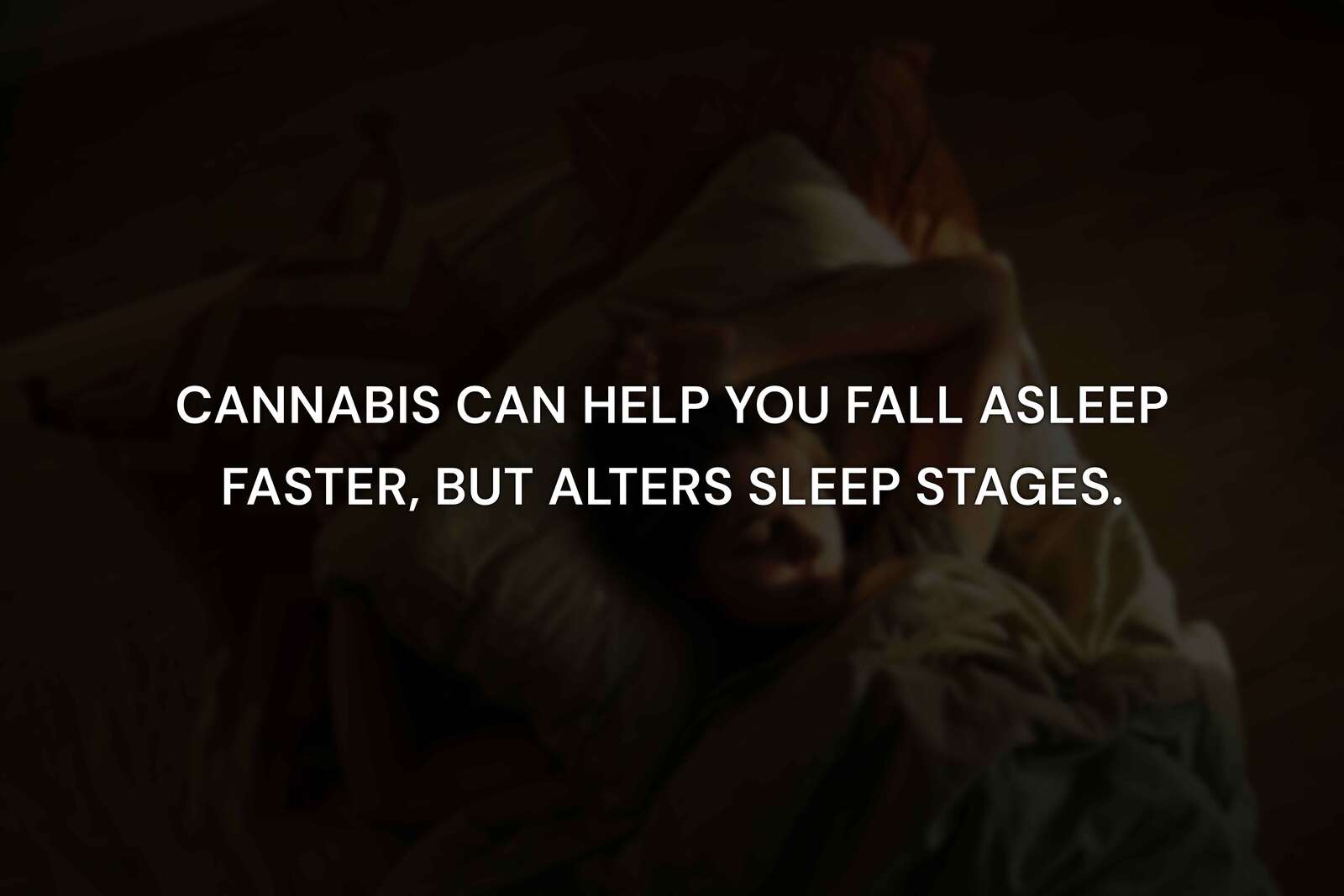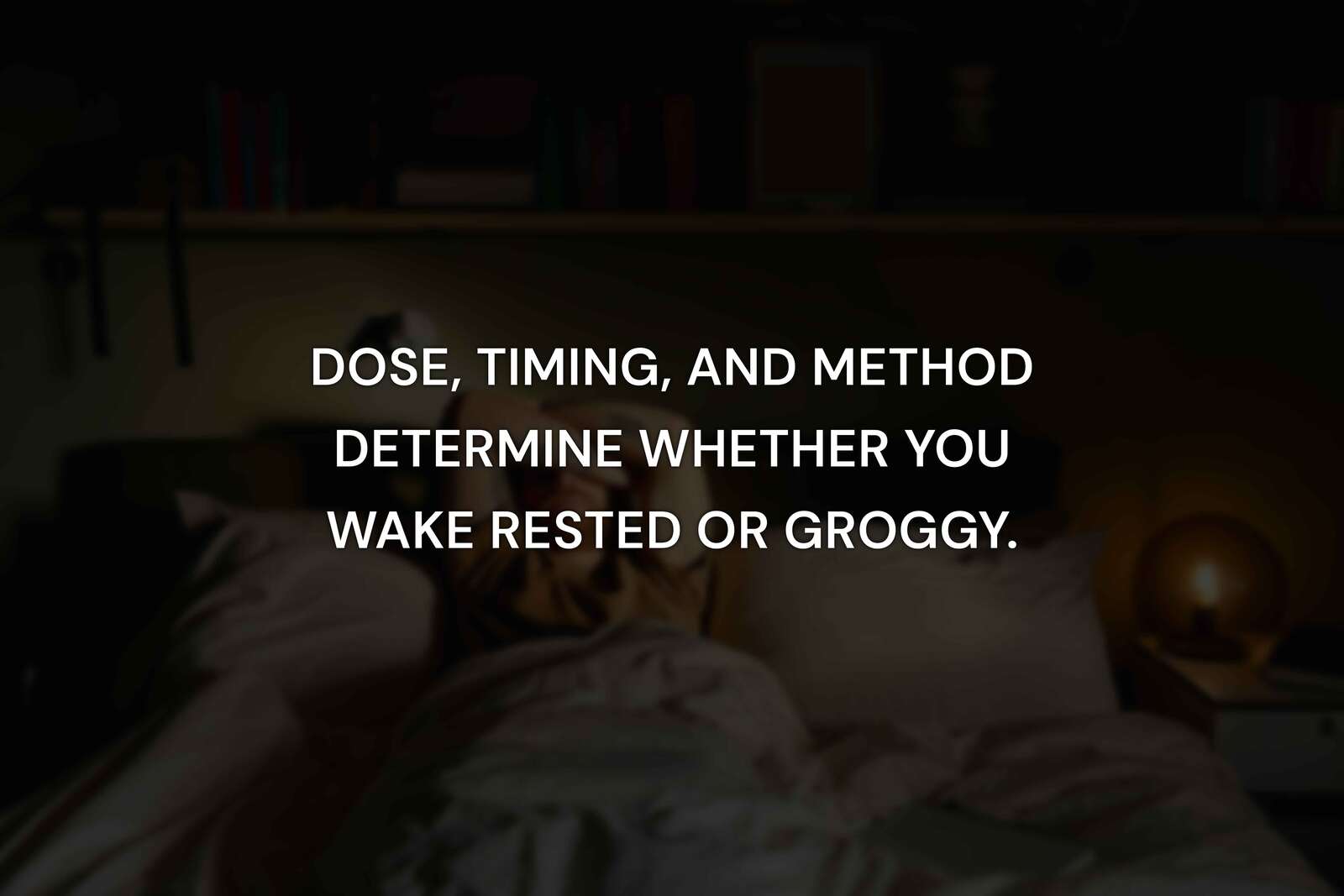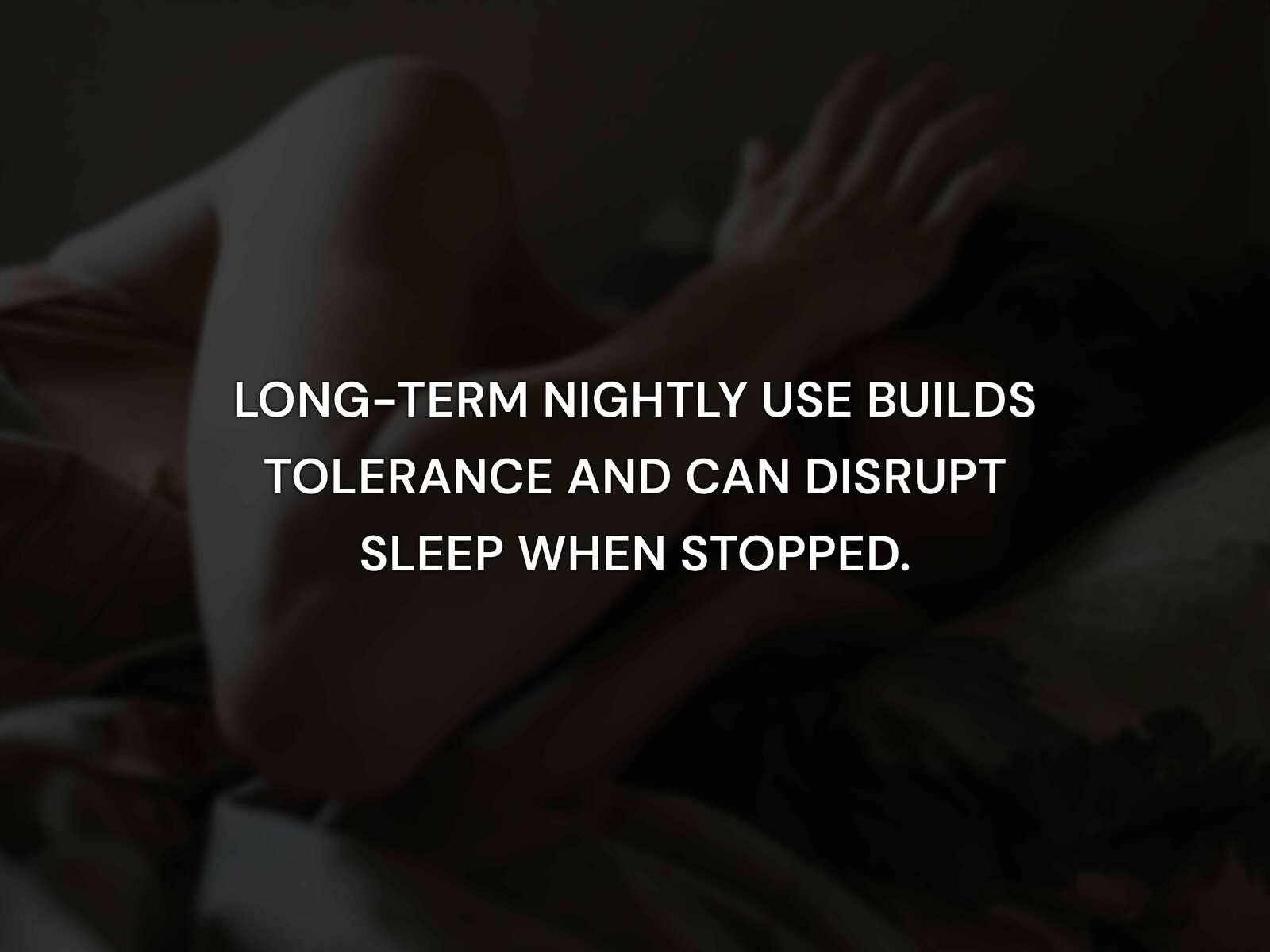Sleeping while high changes how quickly you fall asleep, how your sleep stages are distributed, and how you feel the next morning. Cannabis interacts with CB1 receptors involved in circadian rhythm and arousal, so dose, timing, and product type directly influence outcomes, ranging from faster sleep onset to next-day fogginess.
Does cannabis help you fall asleep?
Yes. Low to moderate THC doses commonly shorten sleep latency by roughly 15–30 minutes for many adults who struggle with nighttime rumination or pain. THC dampens cortical arousal, which quiets racing thoughts and makes drowsiness arrive sooner. People with pain, anxiety, or PTSD often notice the biggest improvements because cannabis reduces the symptoms that keep them awake.
How does being high change sleep architecture?
Cannabis tends to increase slow-wave (deep) sleep and reduce rapid eye movement (REM). More slow-wave sleep can leave muscles and tissues feeling restored, while less REM means fewer vivid dreams and less emotional processing overnight. With repeated nightly use, the REM reduction accumulates. When you stop suddenly, a REM “rebound” is common, dreams return quickly and may feel intense for several nights.

Why do some people feel groggy the next morning?
Grogginess, often called a “weed hangover”, is usually a dose and timing problem. Edibles convert in the liver to 11-hydroxy-THC, which is longer-lasting. If effects are still active at wake time, alertness, reaction time, and motivation dip. Onset and duration matter: inhaled THC begins in 5–10 minutes and lasts 2–4 hours, while edibles begin in 30–90 minutes and can last 6–8 hours. Dosing late (e.g., within 60 minutes of bedtime) or taking 10–20+ mg THC increases the odds of morning haze.

What dose is “sleep-smart” vs. “too much”?
For most adults new to cannabis for sleep, 2.5–5 mg THC is a prudent starting range; many regular users settle between 5–10 mg. Higher doses (15–25+ mg) may knock you out but more often fragment sleep later in the night and raise the chance of next-day lethargy, dry mouth, and low motivation. Adding 5–20 mg CBD can smooth the psychoactive edges and reduce anxiety without blunting sleep benefits for many people.
Do method and timing matter?
Very much. Inhalation is precise for sleep onset problems because you can feel effects within minutes and stop when drowsy. Edibles fit “staying asleep” problems because the effect window is longer, but they require earlier timing, typically 2–3 hours before lights out, to avoid lingering sedation at wake time. Tinctures taken sublingually sit between the two: onset in 15–45 minutes and duration around 3–6 hours, which suits people who need help falling asleep without a long tail into the morning.
What about strains and terpenes?
Indica-leaning chemovars and balanced hybrids are more likely to feel sedating at bedtime. Terpenes such as myrcene, linalool, and beta-caryophyllene are frequently associated with heavier eyelids and calmer mood. Sativa-leaning profiles rich in limonene or pinene may feel “clear” or even stimulating, which can be counterproductive for sleep. Labels aren’t perfect, so track your own response by chemovar name and cannabinoid/terpene profile rather than marketing terms alone.
Will tolerance or withdrawal affect my sleep?
Yes. Nightly use builds tolerance within 2–3 weeks for many people; the same dose produces less drowsiness and shorter duration. Short “T-breaks” of 48–72 hours often reset sensitivity. If you stop after regular nightly use, expect a 3–7 day adjustment period with lighter sleep, more awakenings, and vivid dreams as REM rebounds. These effects typically fade within 1–2 weeks.

Who should be careful or avoid it?
People with untreated sleep apnea, significant cardiovascular disease, a history of psychosis, pregnancy or breastfeeding, or those who must wake quickly and perform safety-critical tasks (e.g., night-shift on call) should be cautious. Combining cannabis with other depressants (alcohol, benzodiazepines, certain sleep meds) amplifies sedation and impairment and raises safety risks.
How to reduce grogginess and improve outcomes
- Time it right: inhale 60–120 minutes before bed or take edibles 2–3 hours before lights out so effects taper by morning. • Use less than you think: start at 2.5–5 mg THC; increase in 2.5–5 mg steps only if needed. • Prefer balanced options: consider a 1:1 THC:CBD product at night to reduce anxiety and next-day fog. • Skip late-night top-ups: extra puffs in bed often push sedation into the morning. • Protect sleep hygiene: keep the room cool and dark, avoid screens 60 minutes pre-bed, and keep a consistent wake time—these amplify cannabis’s benefits and reduce dose needs.
Can cannabis replace sleep medication?
Sometimes people successfully substitute cannabis for sedatives, report fewer awakenings, and avoid next-day “hangovers” associated with certain prescription drugs. Others experience the opposite, fragmented sleep, tolerance, and reliance. Because responses differ, treat cannabis as one tool among many, not a cure-all. If you’re currently using prescription sleep medication, discuss changes with a clinician to avoid withdrawal or interactions.
Bottom line
Being high at bedtime can help you fall asleep faster and feel more physically restored, but higher or mistimed doses reduce REM, increase awakenings late in the night, and make mornings sluggish. The best results usually come from small doses, earlier timing, balanced THC:CBD, and strong sleep hygiene. If your goal is long-term, consistent rest, prioritize dose discipline and periodic breaks so the benefits persist without trading away next-day clarity.